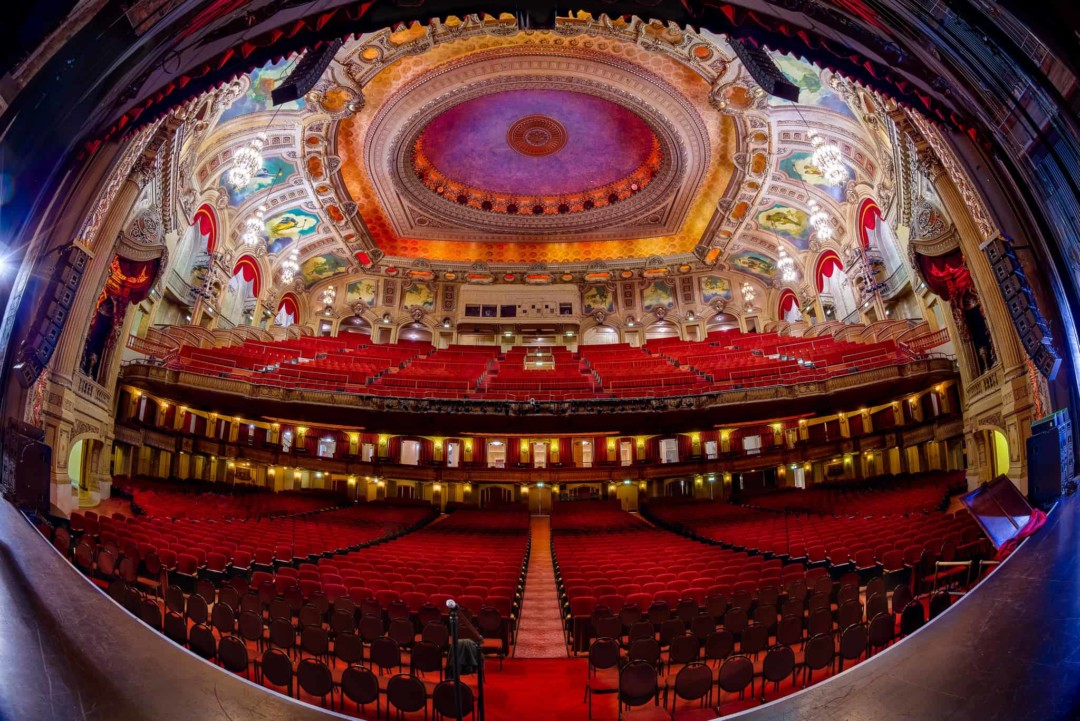Bernardo: Who’s there?
Francisco: Nay, answer me: stand and unfold yourself! [i]
These opening lines of Shakespeare’s Hamlet create a scenario of first and strange encounters: One cold winter night, the two sentries Bernardo and Francisco are standing guard on a platform before the Danish royal castle Elsinore, when the ghost of Hamlet’s father appears in the dark.

This is directly relevant to anthropological analyses of everyday social life: whether we are studying artists in illicit urban settings in Spain, popular democratic practices in rural provinces in India, or the privatisation of public housing and public spaces in London, our field sites are permeated by practices of framing and staging. While the practices implied by the concepts ‘framing’ and ‘staging’ can thus serve as powerful metaphor to describe both, the most intimate presentation of self and the categorisation of a large groups of people, they also raise further questions: In what ways does the theatrical imagery of a stage or the visual image of a frame help us overcome misleading dichotomies such as performance and reality, presentation and essence, rhetoric and communication? How can we conceptualise framing and staging both as political instruments for influencing, say, public opinion and as the very essential practice for constituting sociality or subjectivity?
Asking what it means to ‘enact’ the self or to ‘display’ belonging are fundamentally ethical and political questions that address a wide range of aspects of social life.
Currently in its second year as a research hub, the Cambridge Interdisciplinary Performance Network at the Centre for Research in the Arts, Social Sciences, and Humanities (CRASSH) in Cambridge asks precisely those questions. By bringing together people from anthropology, classics, medicine, modern languages and literature, music, politics, and zoology together, it instigates discussion on how their various approaches to and vocabularies of performance intersect and interact. Such an interest in performance reflects a shift away from the idea of singular performances to thinking about collective processes, conscious enactments, and the implications of audiences. Its remit thus spans across but, crucially, also beyond the study of theatre and artistic practices to ask how performance can more widely be studied as a concept to interrogate reflected and deliberated social action, public policies, or self-cultivation.
The Performance Network is organised around a fortnightly seminar series, convened by classicist Clare Foster and anthropologist Jonas Tinius. Building on its opening year in 2013/2014, which included seminars on cognition, cities, dance, collections, and science, as well as an inaugural conference entitled ‘Beyond the authority of the ‘text’ – Performance as Paradigm’, this year’s programme revolves around the overarching theme ‘The Politics of Staging and Framing’. Again, through a range of seminars dealing with the public sphere, creativity and capitalism, truth and power, science and laboratories, intellectual life, and the creative industries, an international symposium on the concept of the scene, and a second conference on the annual theme, the network seeks to engage in questions of counter-hegemonic cultural imaginations, collective self-identity, and political activism. How do artists deal with situations of complicity with the economic and political relations they seek to critique? How does public life get imagined and enacted? What does it mean to speak of the rehearsal of everyday life?

The seminar series began with an opening session entitled ‘Performing the Public Sphere’. The first of two speakers was Dr Anastasia Piliavsky, a political anthropologist who has been working on corruption, petty crime, and India’s informal economy. Alluding to the phenomenon of stage fright – the inability to express thoughts –, she suggested that any public performance is closely tied to the framing pressure exerted from an audience.
“But why should this be so? We will feel the weight of our audience—a presence that constrains. Very simply, because we will feel exposed” (Piliavsky, Stage Fright, presentation, 13 Oct 2014).
Extrapolating from this introductory scenario, she discusses how sociologist Erving Goffman took this scenario as a means to describe all social interaction in public. Suggesting that those focusing on individual articulation of thought regard social parameters as “strictures”, Gofman understood them as “the armature of communicative life” itself (Piliavsky, ibid.). Put in other words, she suggested that “the sociology of communication tells us that communicative disclosure requires social enclosures” (ibid.). For Piliavsky, Goffman’s thoughts on public interaction provide the grounds for an ethnographically productive critique of the Habermasian conception of the public sphere and public communication. According to his normative historical account outlined in The Structural Transformations of the Public Sphere, the socio-political transformations giving rise to a certain kind of public sphere relied on normative principles of openness, acceptance, and consensus.
At the heart of Piliavsky’s critique of this project was an ethnographically grounded scepticism that this is how politics works on the ground. In many instances, especially among villagers of the North Indian state of Rajasthan, where she conducted most of her fieldwork, publicity is believed to inhibit debate and effective social communication does not take place in plain sight, but through particular channels and face-to-face conversation.

Having raised questions about the wider applicability of this critique, her talk was followed by a discussion of independent street art in Madrid. Dr Rafael Schacter, anthropologist and curator, provided an overview of the different kinds of public independent arts practices on the streets in Madrid. Whereas what he called “consensual practices” tend to ornament the streets, performing complementary images in public that seek dialogic and productive communication with members of what could broadly be conceptualised as a public sphere, “agonistic practices” reacted against the established urban space and ordering of the public (Schacter, 2014).
Creating thus alternative and intervening public art, this latter form of practice corresponded less well with a conception of public communication as espoused by Habermas, but could be better understood as localised resisting narratives that seek conflict rather than consensus. Such narratives, resembling Piliavsky’s deliberations on Rajasthani democratic politics, do not always seek open, dialogic communication, but may well serve to hide, obscure, or challenge facile means and public channels of aesthetic-political communication (see Schacter, forthcoming, 2015).[ii] In their own ways, thus, independent street artists in Madrid created collectives with entirely different publics in mind, with conflicting yet not exclusionary practices which corresponded to or challenged the public framing of space provided by a city.
During a discussion led by Dr David Madden, urban sociologist at the LSE, several strands were identified as crucial to a debate on the study of performed public spheres.
Do exclusivity and foreclosure complement or challenge conceptions of a public sphere? In what ways might it be more fruitful to consider the multiple, contrasting practices that constitute and challenge existing conceptions of public space rather than rely on normative understandings of what a singular public sphere is? What are the roles of audiences and witnesses for the production of public acts? How do failure, competence, and authenticity feature in narratives about public performances?
This seminar and the network’s discussion series more generally raise interesting questions for new approaches to the relationship between anthropology and art. With many new collaborations planned and discussed for example at this summer’s EASA 2014 conference in Tallinn, e.g. at Roger Sansi’s Laboratory Anthropologies of Art or Thomas Fillitz’ panel Anthropology and Art, the Performance Network contributes to a growing trend of interdisciplinary research on the intersection between these two fields. This ties in with the Art meets Anthropology ALLEGRA posts published earlier this year on Aman Mojadidi.
The Network’s upcoming annual conference, ‘The Politics of Framing and Staging: Performance as Paradigm II’ will take place on Monday, 8 December 2014 at CRASSH in Cambridge. Registration has opened. For more information, visit our website for podcasts and updates, follow us on Facebook and twitter (@PerformNet), or write to the Network convenors Jonas Tinius (jlt46@cam.ac.uk) or Clare Foster (clef3@cam.ac.uk).
References:
[i] William Shakespeare. Hamlet. Act 1, Scene 1.
[ii] Schacter, Rafael. 2015. ‘The invisible Performance/The Invisible Masterpiece: Visibility, concealment, and commitment in Graffiti and Street Art’, in: Flynn, Alex and Jonas Tinius. Eds. Anthropology, Development, Performance: Reflecting on Political Transformations. London/New York: Palgrave Macmillan.






